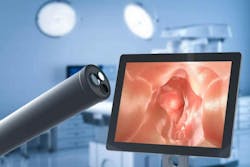Chief Ray Angle: Illuminating Endoscopy’s Precision Path
In the dynamic field of medical technology, Custom Optics Companies are crucial contributors to driving innovations that redefine the limits of what can be achieved. Within the expansive realm of optical engineering, one pivotal factor that significantly influences the success of endoscopy is the chief ray angle. This article delves into the world of endoscopy, shedding light on the importance of the chief ray angle from the perspective of Shanghai Optics. Understanding Endoscopy Endoscopy is a cutting-edge medical technique that involves inserting a specialized endoscope into the body to visualize and examine internal organs and tissues. This modern marvel, consisting of a slender, flexible tube equipped with a camera and light source, provides a minimally invasive approach to diagnosis and treatment. The Significance of the Chief Ray Angle For a Custom Optics Company, the chief ray angle in endoscopy refers to the angle at which light rays enter and exit the optical system within the endoscope. This seemingly technical parameter carries profound implications for the quality of images captured by the endoscope’s camera, significantly impacting the clarity, precision, and effectiveness of visual information relayed to medical practitioners. Factors Influencing Chief Ray Angle Shanghai Optics acknowledges various factors influencing the chief ray angle in endoscopy, including endoscope design, flexibility, light source quality, camera technology, and physician proficiency. These factors are meticulously considered in the engineering of endoscopes to achieve optimal imaging conditions. Our mission revolves around advancing medical technology, and the field of endoscopy, driven by innovative custom optics, has revolutionized healthcare by providing unprecedented insights into the human body. In the ever-evolving landscape of technology and science, the chief ray angle will continue to play an indispensable role in shaping the future of endoscopy. Shanghai Optics remains committed to enhancing healthcare outcomes, promoting patient well-being, and contributing to the fusion of technology and medicine defining our era. For consultations or project quotes, please feel free to contact us. Shanghai Optic’s collaboration has resulted in an exceptional dual-band camera that sets new standards in monitoring and surveillance. Its versatility, advanced technology, and intelligent features make it indispensable for enhancing security and safety across diverse environments. Shanghai Optic remains committed to delivering innovative solutions, pushing the boundaries of surveillance technology to meet the evolving needs of its customers and partners.The Crucial Role of Chief Ray Angle
